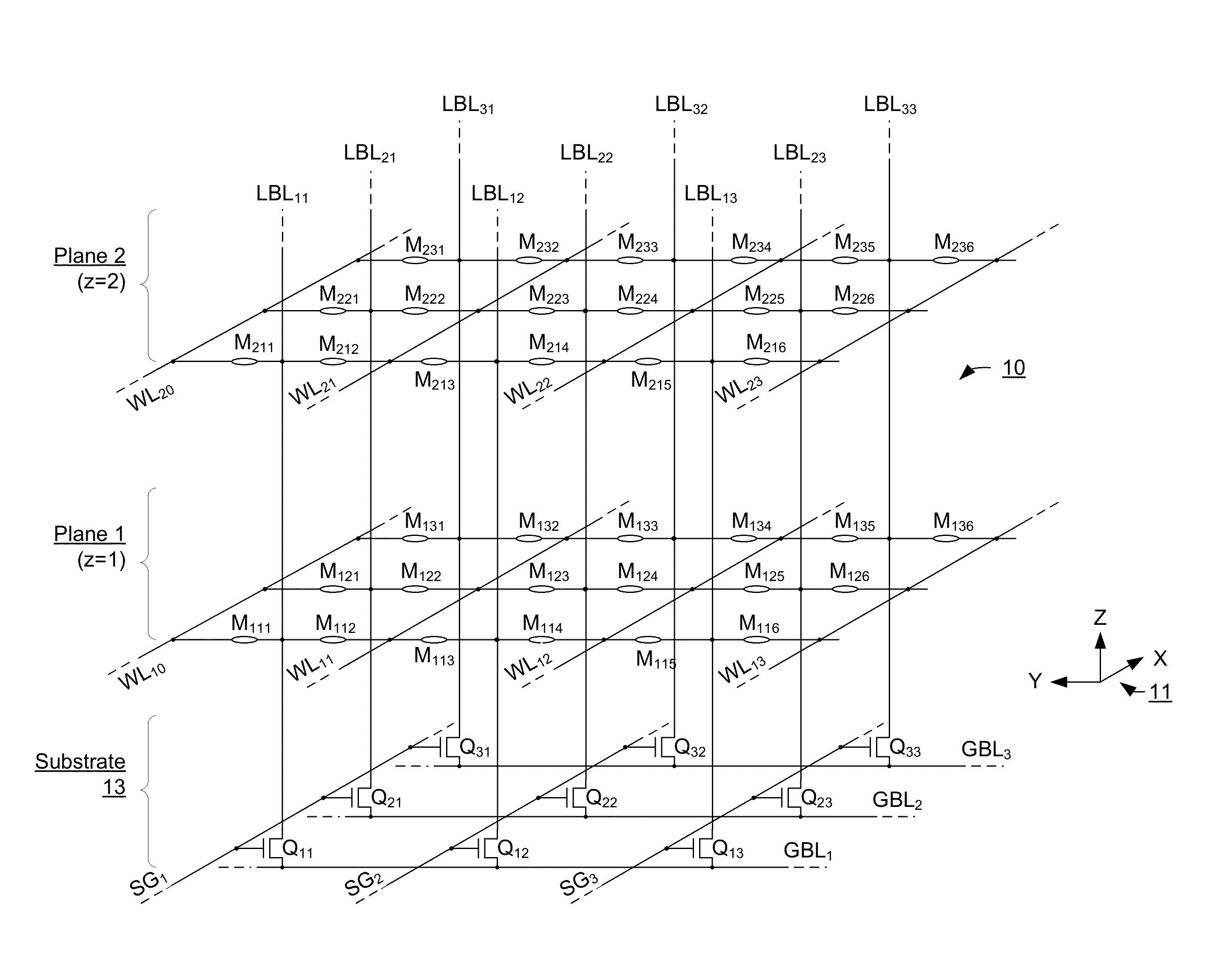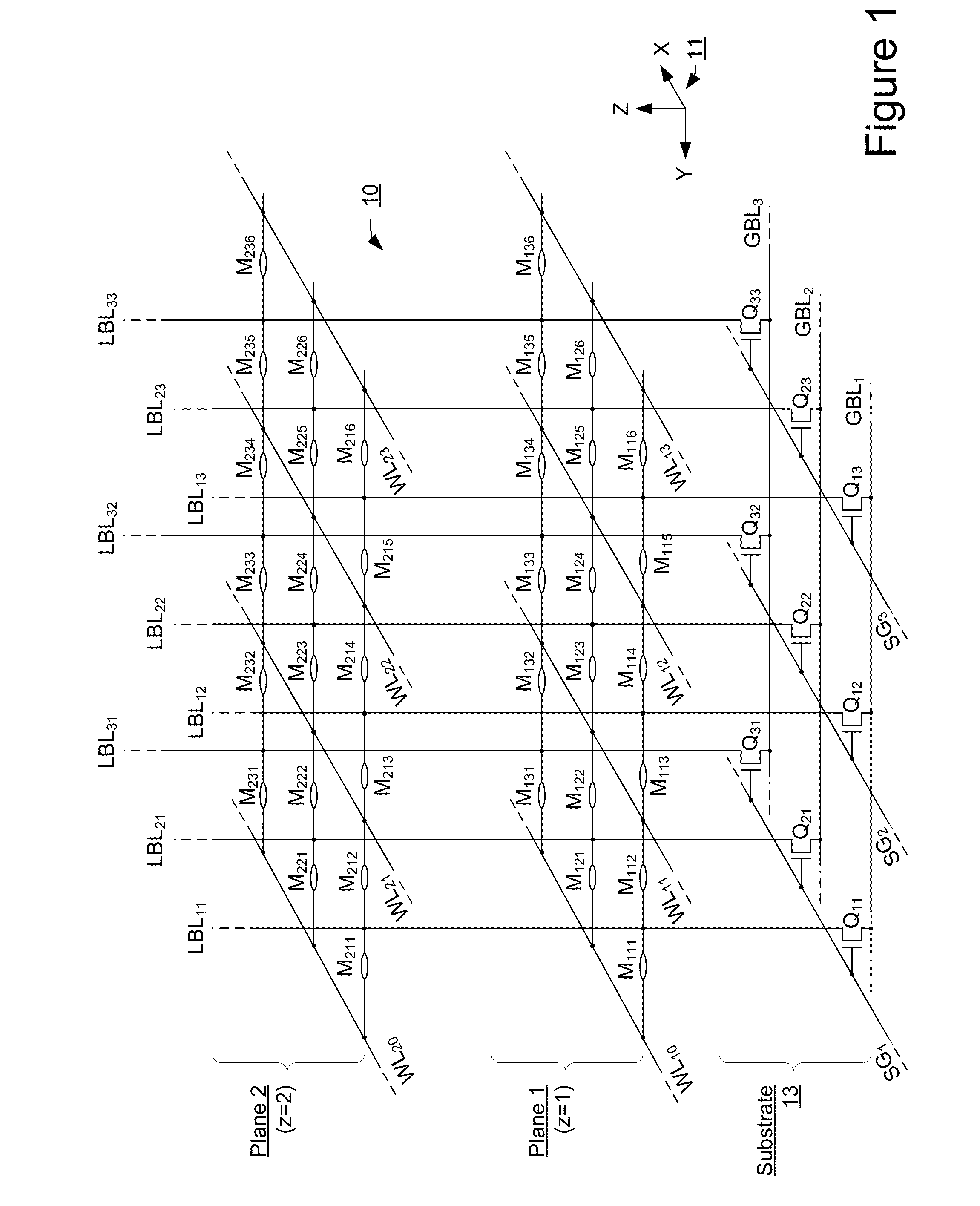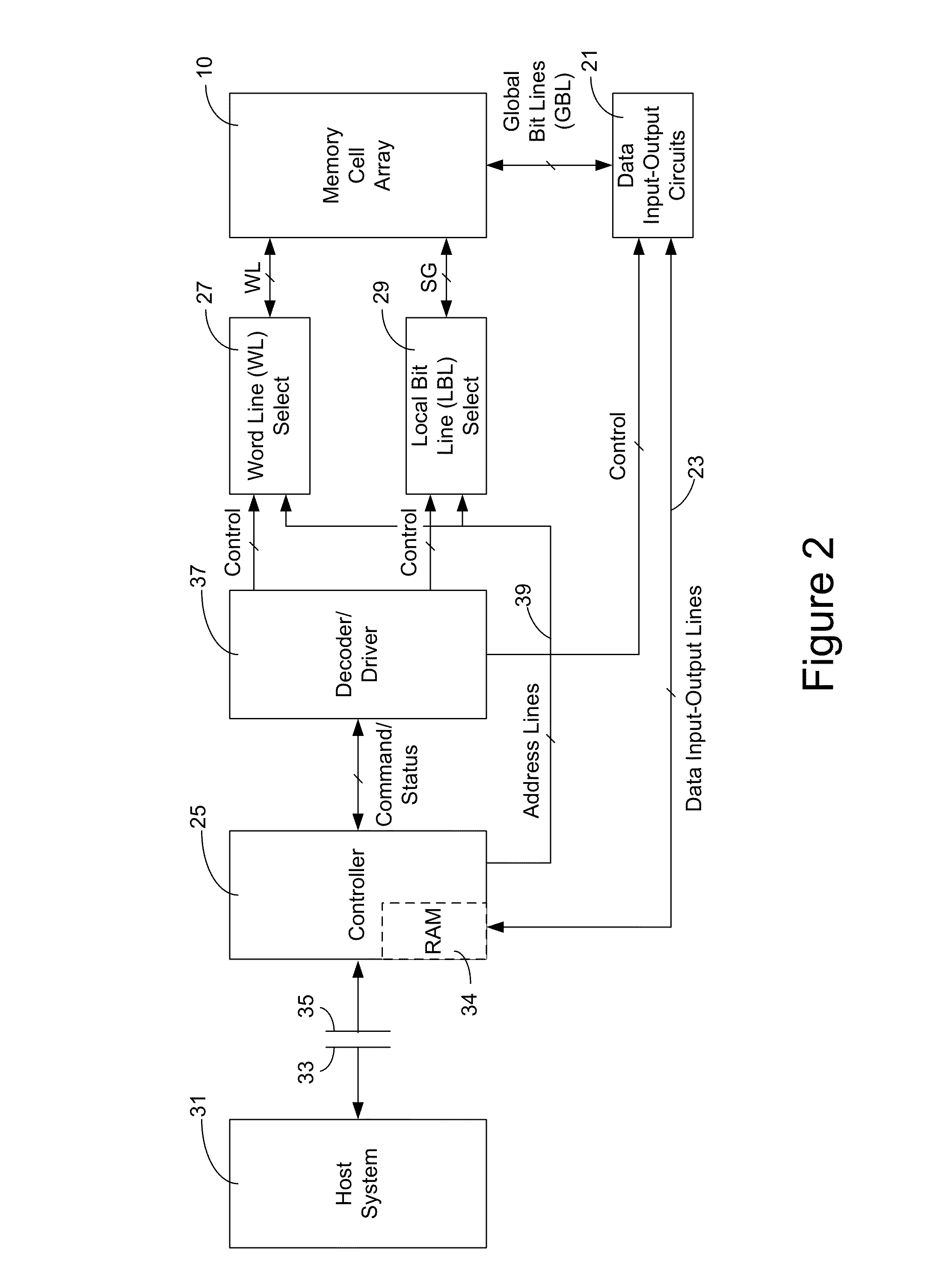Low forming voltage non-volatile storage device
a non-volatile storage, low-forming voltage technology, applied in semiconductor devices, digital storage, instruments, etc., can solve the problems of high transient current, damage to one or more portions of the memory device, and difficult managemen
- Summary
- Abstract
- Description
- Claims
- Application Information
AI Technical Summary
Benefits of technology
Problems solved by technology
Method used
Image
Examples
Embodiment Construction
[0035]One embodiment includes a three-dimensional array of memory elements that can be set to a first state and reset to a second state during operation by biasing appropriate voltages on the word lines and bit lines. Prior to operation, the memory elements undergo a forming operation, during which current through the bit lines is limited. A forming voltage is applied to the memory elements during forming with a polarity such that a given bit line acts as a cathode and the appropriate word line acts as an anode, with the cathode having a lower electron injection energy barrier to the switching material than the anode. Such a configuration provides for a more controlled and accurate forming method that does not damage the memory device.
[0036]The memory elements used in the three-dimensional array are preferably variable resistive memory elements. That is, the resistance (and thus inversely the conductance) of the individual memory elements is typically changed as a result of a voltag...
PUM
| Property | Measurement | Unit |
|---|---|---|
| current | aaaaa | aaaaa |
| voltage | aaaaa | aaaaa |
| voltage | aaaaa | aaaaa |
Abstract
Description
Claims
Application Information
 Login to View More
Login to View More - R&D
- Intellectual Property
- Life Sciences
- Materials
- Tech Scout
- Unparalleled Data Quality
- Higher Quality Content
- 60% Fewer Hallucinations
Browse by: Latest US Patents, China's latest patents, Technical Efficacy Thesaurus, Application Domain, Technology Topic, Popular Technical Reports.
© 2025 PatSnap. All rights reserved.Legal|Privacy policy|Modern Slavery Act Transparency Statement|Sitemap|About US| Contact US: help@patsnap.com



